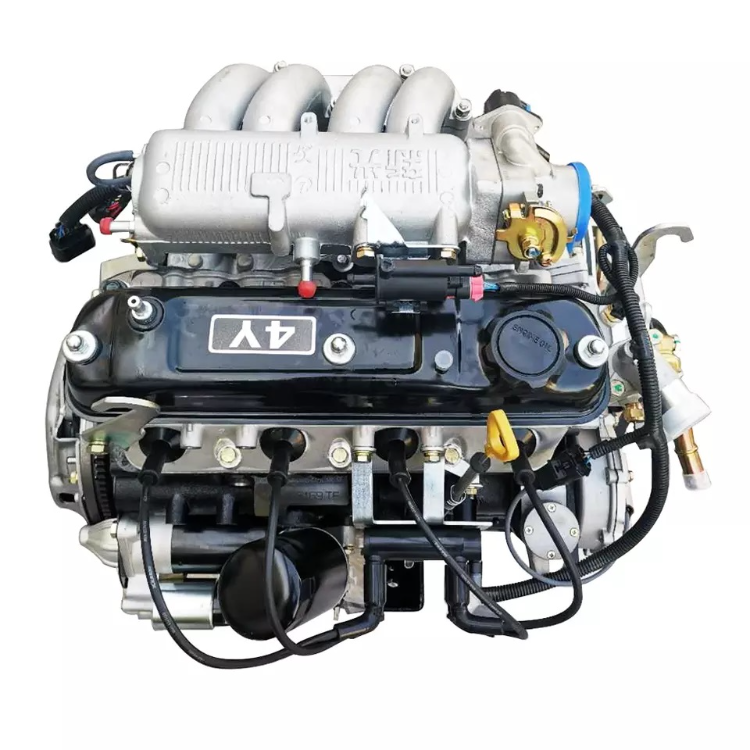How to Maximize Fuel Economy with Your 4Y Engine
The Ultimate Guide to the Engine: Secret Insights for Every Car Lover
Understanding the engine is basic for any automobile lover, as it serves as the heart of the car and dictates its efficiency. The intricacies of engine dynamics and the latest improvements in modern technology existing inquiries that merit more expedition.
Composition of an Engine
Recognizing the anatomy of an engine is critical for any cars and truck enthusiast looking to delve deeper right into vehicle auto mechanics. An internal burning engine mainly consists of a number of essential parts that operate in unison to transform fuel into power.
At the heart of this system lies the cyndrical tube block, which houses the cylinders where burning occurs. Piston activity within these cylinders is assisted in by the crankshaft, which equates straight motion right into rotational energy. Furthermore, the camshaft plays a crucial role in managing the opening and closing of the engine's valves, making certain proper air-fuel combination intake and exhaust gas expulsion.
Various other crucial elements consist of the gas system, which provides the engine with the necessary fuel, and the ignition system, in charge of starting burning - 4y engine. The cooling and lubrication systems are likewise essential, preserving ideal operating temperature levels and lowering rubbing, specifically
Engine Types and Configurations
A varied range of engine types and configurations exists, each offering unique advantages and negative aspects tailored to different driving requirements and choices. One of the most typical engine types consist of inline, V, flat, and rotary arrangements.
Inline engines, featuring cyndrical tubes organized in a solitary line, are understood for their simplicity and efficiency. They are often discovered in portable cars, supplying a balance of power and economic situation. V engines, identified by their 2 banks of cyndrical tubes arranged in a V shape, supply higher efficiency and smoother operation, making them prominent in sporting activities and luxury autos.
Level engines, or fighter engines, have horizontally opposed cylinders, which add to a lower center of mass, boosting vehicle stability. These are generally seen in brand names like Subaru and Porsche.
Rotary engines, although less typical, use a special layout with a triangular rotor and deal high power-to-weight ratios. They excel in small and light-weight applications, mainly seen in Mazda automobiles.
Each engine type offers specific efficiency qualities, weight circulations, and fuel performances, ensuring that automobile lovers can select the best engine setup to match their driving design and automobile needs.

Just How Engines Work
Engines, no matter their type or setup, operate basic principles that govern their performance and performance. At their core, engines convert gas into power with a series of regulated surges or compressions. This process typically includes four main strokes: consumption, compression, exhaust, and power.
During the consumption stroke, the engine attracts in a mix of air and gas. In the power stroke, a trigger fires up the pressed combination (in fuel engines) browse around here or the mix ignites spontaneously (in diesel engines), resulting in a rapid expansion of gases that presses the piston down.
The effectiveness of an engine is influenced by various factors, consisting of the style of the combustion chamber, the kind of gas made use of, and the precision of the engine's elements. Understanding these basic concepts is crucial for vehicle enthusiasts that seek to appreciate the elaborate technicians behind their vehicles, in addition to see this site for those aiming to improve efficiency via modifications and tuning.
Advancements in Engine Modern Technology
In the last few years, innovations in engine technology have actually significantly changed the vehicle landscape, improving both performance and environmental sustainability. Among the most noteworthy technologies is the growth of turbocharging and supercharging, which permits smaller engines to create higher power outcomes without sacrificing gas effectiveness. This has actually brought about a rise in the appeal of scaled down engines, offering producers with the capacity to fulfill rigid emissions regulations while maintaining efficiency criteria.
Additionally, crossbreed and electric powertrains are improving the engine paradigm. Hybrid systems incorporate interior burning engines with electric motors, enhancing gas intake and lowering discharges. Completely electrical lorries (EVs) get rid of the combustion engine completely, counting on sophisticated battery technology to deliver instantaneous torque and remarkable velocity.
Additionally, the combination of artificial knowledge and artificial intelligence in engine administration systems permits real-time optimization of performance specifications, boosting performance and responsiveness. Advancements such as variable valve timing and straight gas injection additionally fine-tune burning processes, optimizing power outcome while blog minimizing waste.
As the vehicle sector proceeds to evolve, these technologies in engine innovation will certainly play a crucial function fit the future of movement, prioritizing both efficiency and sustainability.
Maintenance Tips for Fanatics
Preserving an engine is as crucial as the advancements that boost its efficiency. Routine upkeep not only extends the life of your engine but also guarantees ideal performance.
Examine and change air filters occasionally to ensure proper air flow, which is essential for combustion performance. A blocked air filter can lead to decreased performance and boosted gas usage. In a similar way, check the coolant degrees to avoid getting too hot, and replace coolant according to the service routine.

Final Thought
In verdict, a comprehensive understanding of engine makeup, types, and technicians is necessary for vehicle fanatics. Routine upkeep methods, including oil changes and air filter checks, are critical for ensuring optimal engine capability and longevity.

Engines, no matter of their type or setup, run on essential concepts that control their efficiency and efficiency. In the power stroke, a spark fires up the compressed blend (in gas engines) or the combination fires up automatically (in diesel engines), resulting in a fast growth of gases that presses the piston down.In recent years, innovations in engine technology have actually substantially transformed the auto landscape, improving both performance and ecological sustainability.